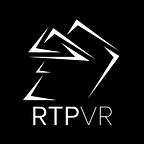FirstSim VR: Vote to Bring High-End, Reconfigurable VR To The Triangle
**Written by Nathan Hoffmeier and Jason Jerald, NextGen Interactions.
Hey Everyone,
Many of you may have noticed that I’ve slowed down on my RTPVR blog writing. Today, I want to show you why.
I’ve been working with a local Virtual Reality company called NextGen Interactions. We’re currently working on a highly reconfigurable Virtual Reality Training system for first responders (Police, Firefighters, and EMS). This project is in the early stages, and we’re seeking VOTES to help us win a grant from the National Institute of Standards and technology. (Vote here: https://herox.com/NISTvr/entry/12619)
While the initial system is targeted at emergency services, we hope that its contents can lead to some of the most exciting, high-end VR services available in the Triangle.
Our goal is to create a VR system that allows you to:
- Physically reach out, touch, feel, and interact with all objects in the Virtual Space
- Walk around and inhabit warehouse sized environments with zero motion sickness and no wires to distract or restrict your experience
- Build any VR environment, for a variety of scenarios, in minutes
- Bring your entire body into the VR experience (not just your hands)
- Share massive virtual spaces with multiple users, all of whom can interact directly with you and the objects around you.
Imagine all of this adding up to professional VR experience that makes the HTC-Vive feel like the google cardboard in comparison. Our goal is to make this project a reality.
Introducing, FirstSim VR: a high-end, fully reconfigurable VR system that we are hoping to build right here in the Triangle.
Now, first and foremost, what do we mean by reconfigurable? Well, because our initial market is local governments looking to better train first responders (as well as prototype new tools for them), our goal is to create a product that can be quickly customized to fit a variety of first-responder scenarios. In order to accomplish this, we are outfitting our VR kit with a number of styrofoam blocks, tracked props, and mannequins. These blocks and props will represent and display (in the VR headset) as any number of different objects in the VR space, including walls, chairs, people in need of help, etc. And of course all of these things can be altered with virtual fire, smoke, and other hazardous materials.
The goal of these styrofoam blocks and other trackable props are two-fold:
1.) They will give users a heightened sense of interactivity and presence as they can grab and move objects in the virtual world by grabbing and interacting with the real world blocks.
2.) They will allow users to rapidly create (and reconfigure) a multitude of different scenarios. These scenarios will be defined by simple blueprints, generated and saved by Scenario Creators and our software. All scenarios can be put together in minutes without any knowledge of programming or high level technical know-how. First Sim VR gives its users access to an untold number of varied scenarios, all easy to set up, understand, and run.
While our initial market is first responders, we believe the customizability of this product could go a long way in the Triangle’s local VR scene and beyond. One anticipated use for FirstSim VR is Prototyping new technology. The ability for a developer or creator to insert and test their ideas in a safe VR space will be built into the program, as will analytical tools for better assessing the outcomes of such tests. For example, imagine prototyping a way for firefighters to view thermal imaging in a next generation HoloLens. While that technology may be a few years off, FirstSim VR offers developers the chance to test that experimental technology in a safe, virtual space.
With FirstSim VR, NextGen Interactions is aiming to create a fully reconfigurable and fully interactive virtual reality space in the Triangle. The VR space itself can range in size from a small cubicle to a large warehouse and will allow for multiple users to inhabit the space at once. Ontop of that, all VR headsets will be untethered, meaning no tripping over or worrying about wires in the VR space.
We will also support full body tracking, allowing users to see not just their hands, but their torsos, forearms, legs, and feet as well.
This ambitious project is being helmed by Jason Jerald, a 20+ industry veteran who literally wrote “The VR Book”, one of the most widely used texts on VR design. In his time in the industry, Jason has worked with Valve, Oculus, and NASA to build over 60 distinct VR systems and applications.
We at NextGen Interactions are ready to bring FirstSim VR to the triangle. We are ready to start training our first-responders with the most up-to-date technologies and methods. We are excited to take this project, which Jason started exploring years ago at the University of North Carolina, and turn it into a reality that can benefit first responders, developers, and the Triangle at large.
If you are interested in helping us bring this technology to the Triangle, then please give us your vote on https://herox.com/NISTvr/entry/12619. We’re seeking a grant from the National Institute of Standards and Technology, and your vote of confidence would go an incredibly long way. Simply click the link above or below and click: “Vote for this submission”.
Thanks to everyone. I’m so glad I finally got the chance to tell you all what I’ve been up to. Don’t forget to vote! https://herox.com/NISTvr/entry/12619
